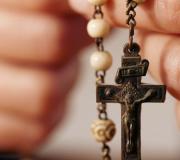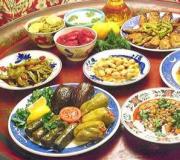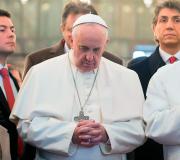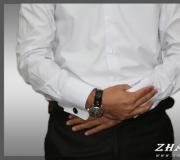Kerch museums: excursions, cost, opening hours. History of creation and collection of the Historical and Archaeological Museum
Kerch State historical and cultural reserve created by Decree of the Council of Ministers of the Ukrainian SSR dated March 5, 1987 No. 66 “On declaring the complex of historical and cultural monuments of the city of Kerch a state historical and cultural reserve” on the basis of the stock collections of the Kerch Historical and Archaeological Museum and monuments of archaeology, history and art included in the protected area city of Kerch.
On the balance sheet of the Kerch Historical and Cultural Reserve there are 15 monuments, of which 10 are monuments national importance. These are the ancient settlements of Nymphaeum, Panticapaeum, Tiritaka, Mirmekiy, Porphenius, Crypt of 1981, Melek-Chesme mound, Tsarsky mound, Adzhimushkai quarries and memorial Complex“To the Heroes of Adzhimushkaya”, Dok Mesaksudi (archaeological museum). In total, the reserve has 64.5 hectares of protected areas.
Stock collections are one of the most numerous in Crimea and number about 200 thousand storage units. The most significant and valuable is the archaeological collection, numbering over 100 thousand items - painted and stamped ceramics, terracotta, antique glass, etc. Archaeological expeditions carried out on the territory of the Bosporus are the main source of acquisition of stock collections.
Part of the archaeological funds is a lapidary collection (over 2300 storage units), which is world famous. Currently, the single building of the lapidarium (R. Luxemburg St., 24/14) is not only a place for storing, but also for exhibiting and restoring monuments with III millennium BC. to the 15th century.
Every year the funds are replenished from more than fifteen international archaeological expeditions conducting archaeological excavations on the Kerch Peninsula.
The archive contains more than 18 thousand items, and the general fund of the scientific library includes more than 31 thousand printed items. This is the only library in Eastern Crimea, where literature on ancient and medieval history of the Northern Black Sea region is concentrated
The reserve team leads great job, holds annual scientific conferences“Bosporus Readings” (together with the Demeter Charitable Foundation), “Scientific and Green Tourism in Eastern Crimea” (together with the Bosporus Charitable Foundation), publishes works and collections of reports. Collections from the funds of the Kerch Reserve were exhibited at international exhibitions in Italy (Aosta), Russia (St. Petersburg) and up to
One of the main tasks of the Reserve is the organization of excursion activities at museum sites. More than 120,000 people visit its facilities every year. Every year about 4,000 excursions are conducted, both sightseeing and thematic, with more than 50 developed excursion themes.
The excursion sites of the reserve are:
- Historical and Archaeological Museum, st. Sverdlova, 22;
- Golden Pantry, st. Sverdlova, 22;
- Art gallery, st. Teatralnaya, 37;
- Museum of the History of Defense of the Adzhimushkay Quarries, st. Brothers Malchenko, 34–35;
- Museum of the History of the Eltigen Landing, st. G. Petrova, 2;
Kerch Historical and Archaeological Museum (Kerch, Russia) - exhibitions, opening hours, address, phone numbers, official website.
- Tours for May Worldwide
- Last minute tours Worldwide
Previous photo Next photo

The Kerch Historical and Archaeological Museum dates back to 1826. Kerch archaeologist French origin In 1816, Paul Dubrux began official excavations in the vicinity of Kerch, one of the results of which was a rich personal collection of coins, ceramics, and fragments of statues. Then Paul studied ancient monuments that were found during excavations on the Kerch and Taman peninsulas, as well as on the Kul-Oba mound. Ten years later, the collection of antiquities had own house, it moved to a new building built on Mount Mithridates in the likeness of the Athenian Temple of Theseus.
However, it existed new museum not for long: in years Crimean War the building was destroyed, and the remains of the collections were transported to neighboring cities. After the war, the museum was restored, and new chapter in his difficult history. Fortunately, the devastating war was followed by quite fruitful years, during which the funds of the Archaeological Museum were constantly replenished. In 1922, it was allocated as a museum luxury mansion, made in an eclectic style. It seems that great prospects are opening up for the Kerch museum, but all plans are ruined by the Great Patriotic War.
A journey through the Historical and Archaeological Museum - one of the oldest museums on the peninsula - will introduce you to ancient and medieval history Kerch, starting from the time of the very first settlements.
Attempts to save the museum's funds, including its most valuable exhibits, led nowhere: all archives were lost during the evacuation. After the war, the museum began to be restored bit by bit: the building was renovated, new exhibits were organized, several new departments and branches were opened, and excursion programs were developed. The collection of museum collections continues to this day; revenues come from archaeological research and expeditions on the Kerch Peninsula.
Museum today
Currently in the Historical archaeological museum two work permanent exhibitions: “History of the Bosporan Kingdom” and “From Korchev to Russian Kerch.” In addition, the museum regularly hosts a variety of temporary exhibitions. The museum collections contain about 130 thousand exhibits that tell about the inhabitants of ancient Kerch, their way of life, crafts, culture and give the opportunity to imagine what the settlement was like thousands of years ago. IN exhibition halls collected ceramics, amphorae, local handicrafts, lapidary writings, sculptures, and architectural fragments.
Address: Crimea, Kerch, st. Sverdlova, 22.
Directions from the city airport station to the "Museum" stop (bus routes No. 5, 6, 19).
Opening hours: Wednesday - Sunday: 9.00 - 18.00 (ticket office - until 16.15),
Tuesday: 11.00 - 20.00, Monday - closed.
Prices: for adults - 60 rubles; for children - 30 rub. Excursions for groups of 5 - 25 people. - 200 rub.
History of creation and collection of the Historical and Archaeological Museum
Museum, dedicated to the history and archeology of the city of Kerch, today is part of the East Crimean Historical and Cultural Museum-Reserve. And once upon a time it was one of the first museums opened not only in Crimea, but also in Russia. This happened in the 19th century, when, after several years of archaeological research, a Russian citizen of French origin, Paul Dubrux, donated his own collection of rarities he had discovered to create an exhibition. Among the unique exhibits found since 1816 were examples of ceramics, coins, parts of statues and inscriptions.
The first head of this institution, opened in June 1826, was I.P. Blaramberg. Then it was Kerch Museum antiquities, where the main goal was not just the preservation of already found objects, but also the continuation of activities in the study of monuments from antiquity. Archaeological excavations were carried out on two peninsulas at once - Kerch and Taman - where the famous Bosporan kingdom was once located.
In the fall of 1830, the untold riches of the mound known as Kul-Oba were discovered. Then excavations began on other mounds, of which there are plenty in the area close to Kerch. True, this activity was not always properly documented, so it is difficult to get an idea of all the discoveries made in this area. However, the director of the museum since 1832, A.B. Ashik did a great job creating the first scientific work, which summarized information on the history of the Bosporan state. From the 30s to the 50s XIX century, the museum’s collection was replenished with numerous unique items from bygone eras. Even though the most striking and significant finds were taken to St. Petersburg for exhibition in the halls of the Hermitage, the museum collections still contained many outstanding specimens. Since 1859, the museum began to be subordinate to the Imperial Archaeological Commission, so excavations in and around Kerch from that time on were carried out using a scientifically based approach.
From the 30s to the 50s XIX century, the museum’s collection was replenished with numerous unique items from bygone eras. Even though the most striking and significant finds were taken to St. Petersburg for exhibition in the halls of the Hermitage, the museum collections still contained many outstanding specimens. Since 1859, the museum began to be subordinate to the Imperial Archaeological Commission, so excavations in and around Kerch from that time on were carried out using a scientifically based approach.
The premises for exhibitions were the halls of a building specially built for 1835 in the spirit of the Athenian Temple of Hephaestion. The museum collections were moved here in 1841. The structure was badly damaged during the Crimean War (1853 - 1856). Significant damage was also caused to the museum's funds. Although the archive, library and part of the exhibition samples were able to be transported to Orekhov and Yekaterinoslav, the invaders still stole many interesting valuable items that can still be seen in the museum today. British Museum. Destroyed building in post-war years restored, but given over to a temple in honor of Alexander Nevsky, and museum collections placed in rented space. Collections Kerch Museum continued to be replenished during scientific excavations, and with the final establishment of Soviet power in Crimea in 1920, the biography of this institution begins new stage. From that time on, it began to be called the Kerch Historical and Archaeological Museum. Since the museum's funds had been significantly replenished and it was necessary to expand the exhibitions, in 1922 it moved to a beautiful mansion, which previously belonged to the owner of the factories K.I. Mesaksudi.
Collections Kerch Museum continued to be replenished during scientific excavations, and with the final establishment of Soviet power in Crimea in 1920, the biography of this institution begins new stage. From that time on, it began to be called the Kerch Historical and Archaeological Museum. Since the museum's funds had been significantly replenished and it was necessary to expand the exhibitions, in 1922 it moved to a beautiful mansion, which previously belonged to the owner of the factories K.I. Mesaksudi.
The museum experienced its next devastation during the Great Patriotic War. Exhibits sent to Armavir, archival documents and part of the library collection were lost. Many valuable items were taken first to the Simferopol Museum, and later to Germany. Only a small part of them were returned. But the museum staff managed to create new magnificent exhibitions.
Today the collection includes more than 130 thousand exhibits, including antique amphorae, terracottas, ancient ceramics with paintings, ancient glass objects and other amazing objects that invariably attract the attention of history buffs. There are always exhibitions here, dedicated to history The Bosporan kingdom and the development of Kerch, starting from the time of the city of Korchev.




